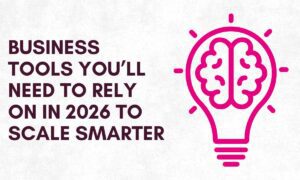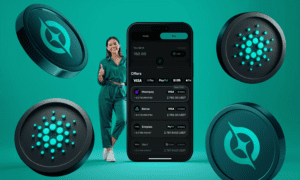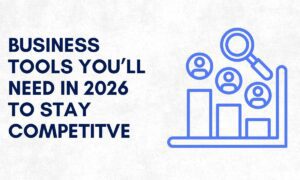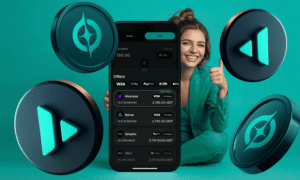Launching a tech product online is both an exciting and challenging endeavor. With fierce competition and constantly evolving user expectations, it’s essential to take a strategic and well-structured approach. A successful product launch isn’t merely about releasing your product into the digital world—it’s about creating momentum, building trust, and delivering value from day one.
Whether you’re a solo entrepreneur, part of a startup team, or managing a corporate product rollout, this comprehensive guide will walk you through each step of launching a tech product online successfully. From market research to post-launch optimization, we’ll cover it all.
Conduct Thorough Market Research Before Committing to Development
Before you begin building or refining your tech product, conducting thorough market research is non-negotiable. This foundational step helps validate your product idea, identify your target audience, and understand the competitive landscape.
Start by asking essential questions:
- Who is your ideal user?
- What specific problem does your product solve?
- Are there already existing solutions in the market?
You can use tools like Google Trends, forums such as Reddit and Quora, and keyword research tools like SEMrush or Ubersuggest to gain insights. Additionally, consider running surveys or interviews with potential users to gather first-hand feedback. Without market validation, even the most technically advanced product can fall flat.
Create a Detailed Launch Strategy with Defined Goals and Timelines
Once you’ve validated your product idea, the next logical step is to create a robust launch strategy. A tech product launch is not a one-day event—it’s a campaign. Therefore, mapping out the journey in stages helps keep everything organized and aligned.
Break down your strategy into three core phases:
- Pre-launch: Build hype, tease features, and collect leads.
- Launch: Announce the product, go live, and focus on conversions.
- Post-launch: Collect feedback, fix bugs, and scale up marketing.
Your plan should include SMART goals—Specific, Measurable, Achievable, Relevant, and Time-bound. For instance, aim to capture 5,000 email subscribers before the launch or achieve 1,000 downloads in the first week.
Build a High-Converting and User-Friendly Website or Landing Page
Your website or landing page is the first real impression users will have of your product. So it needs to look professional, load fast, and communicate value clearly. Most importantly, it must be optimized for both desktop and mobile users.
Include the following essential elements:
- A compelling headline that grabs attention.
- Brief product description with clear benefits.
- Eye-catching visuals or demo videos.
- Social proof such as testimonials or press mentions.
- Strong call-to-action buttons (e.g., “Join the Waitlist,” “Get Early Access”).
For SEO purposes, ensure that your on-page elements (meta titles, descriptions, headers, and keywords) are properly optimized. Integrate relevant keywords naturally throughout your content to boost visibility in search engine rankings.
Build Anticipation Through Strategic Pre-Launch Marketing Campaigns
Before your product is available to the public, you should already be working to generate buzz. Pre-launch marketing sets the stage for a successful launch by creating curiosity and building an audience.
Some effective pre-launch strategies include:
Email Marketing: Create a lead magnet (like a free eBook or exclusive access) to collect emails.
- Social Media Teasers: Share behind-the-scenes content, sneak peeks, or countdowns.
- Referral Programs: Encourage early users to invite others by offering rewards.
- Influencer Outreach: Partner with relevant influencers who can promote your product to their followers.
- Remember, people buy from brands they recognize and trust. Pre-launch engagement builds that trust gradually and organically.
Use Product Hunt, BetaList, and Other Launch Platforms for Maximum Exposure
When it’s finally time to unveil your product, using online launch platforms can help you reach a massive audience in a short amount of time. Platforms like Product Hunt, BetaList, and Startup Stash are designed to connect innovators with early adopters.
To make the most of these platforms:
- Craft a clear and compelling tagline.
- Upload high-quality screenshots and demo videos.
- Engage with users in the comments section.
- Be responsive and thank people for their feedback.
These platforms can drive thousands of visits to your website in a day, which is why preparing well in advance is crucial. Even more, if your product is upvoted or featured, it can lead to press coverage and partnership opportunities.
Ensure a Smooth Technical Launch and Monitor Performance Closely
Technical glitches on launch day can damage your reputation and erode trust. To avoid this, conduct multiple rounds of testing before going live. Test every feature, form, and flow on different browsers and devices. You may also want to do a soft launch—releasing the product to a small group of users first—to catch any bugs before the wider rollout.
Make use of tools like:
- Google Analytics for user behavior tracking.
- Hotjar for heatmaps and session recordings.
- Sentry or LogRocket for error monitoring.
- Uptime Robot for server and uptime checks.
Furthermore, have your customer support ready to handle inquiries, bug reports, or complaints. Whether via email, live chat, or social media, quick and helpful responses can turn a frustrated user into a loyal customer.
Gather Feedback Immediately and Iterate Based on User Input
After launch, your most valuable resource is customer feedback. Invite users to share their thoughts and be proactive in requesting reviews or suggestions. Not only does this help improve your product, but it also shows that you value your user base.
Use surveys, in-app feedback tools, or community forums to encourage open communication. Analyze patterns in the feedback and prioritize updates that improve usability, performance, or value.
Regular iterations and updates show that your product is evolving and user-focused. Consequently, this increases user retention and long-term satisfaction.
Invest in Content Marketing and SEO to Sustain Organic Growth
Once the product is live and running smoothly, focus on long-term marketing strategies like SEO and content marketing. Publishing valuable content around your product niche not only drives traffic but also establishes your brand as an authority in the space.
- Consider the following content types:
- How-to guides and tutorials related to your tech product.
- Case studies demonstrating user success.
- Comparison posts between your product and competitors.
- Industry news or commentary to engage a broader audience.
- Also, continue building backlinks by guest posting, getting listed on directories, and reaching out to tech blogs for reviews.
Leverage Paid Advertising for Scalable User Acquisition
While organic growth is sustainable, paid advertising provides the boost you need to scale quickly. Depending on your target audience, consider platforms like Google Ads, Facebook Ads, LinkedIn Ads, or Reddit Ads.
Key tips for running effective ads:
- Define clear goals (leads, downloads, conversions).
- Target specific demographics or interests.
- A/B test different ad creatives and copy.
- Track ROI and adjust accordingly.
It’s easy to waste budget on unoptimized ads, so continuous testing and analytics are crucial to success in paid campaigns.
Nurture Your Community and Build Long-Term Customer Relationships
The journey doesn’t end after launch. Building a thriving community around your product can drive word-of-mouth marketing, generate repeat business, and improve customer loyalty.
- Engage with users regularly through:
- Newsletters and product update emails.
- Webinars, AMAs (Ask Me Anything), and Q&A sessions.
- Online communities like Discord, Slack, or Facebook Groups.
- A strong community gives users a sense of belonging and encourages them to become advocates for your product.
Final Thoughts
Launching a tech product online is a complex but rewarding process. It involves more than just deploying code—it requires strategic planning, precise execution, and the ability to adapt based on real-time feedback. By following a structured approach that includes market research, audience engagement, and continuous optimization, you can significantly improve your chances of a successful launch.
Above all, remember that your product must genuinely solve a problem and deliver value. When you focus on the user, success naturally follows.





























